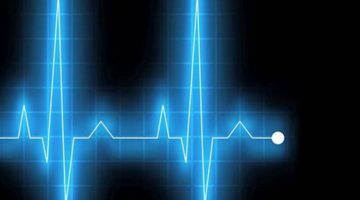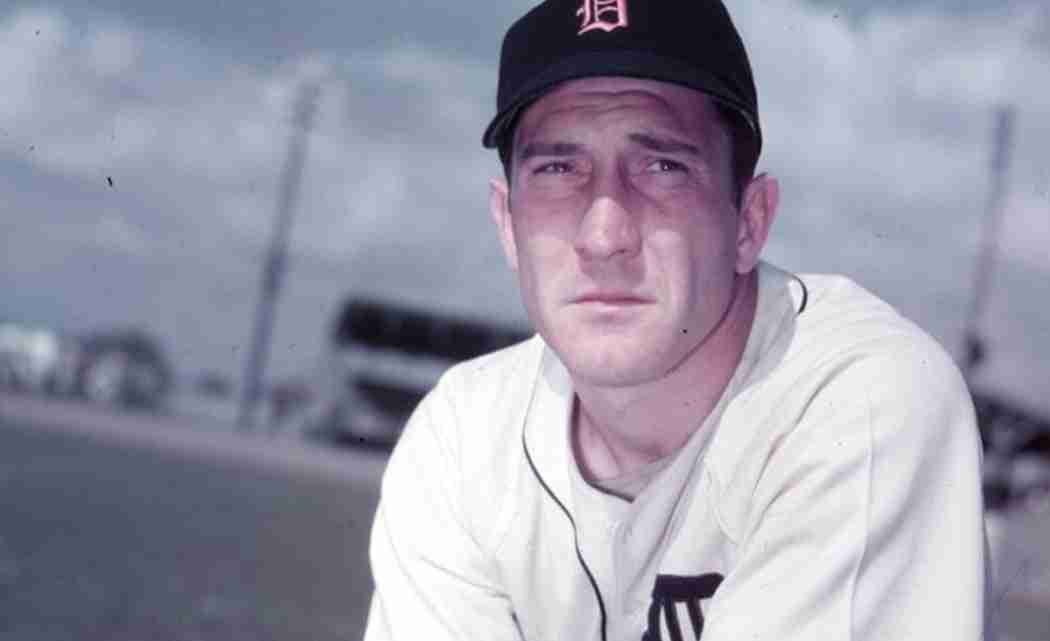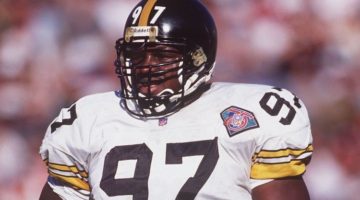By CHRIS ANDERSON
Herald-Tribune
HOLMES BEACH, Fla. (AP) _ At the end of an island, in the back of a baseball field, on the fringe of obscurity, there is an unpretentious plaque dedicated to a man whose immeasurable legacy continues to grow.
The small bronze marker honors Fred Hutchinson, once a big-league pitcher and manager known for his square jaw and scalding temper who lived on Holmes Beach and died in Bradenton.
He has been gone more than 50 years now, succumbing to lung cancer at age 45, but the shocking and sorrowful ending to his life in 1964 was hardly without purpose as it led to one of the world’s top cancer research centers being built and has helped save thousands of lives.
The Fred Hutchinson Cancer Research Center is located in Seattle and this year marks the 40th anniversary of its opening. Joe Hutchinson, Fred’s son, who owns a boutique on Anna Maria Island, remembers how small the center was when it opened in 1975. It housed 15 terminally ill children _ bald, scared and always looking out their windows _ and he still wonders if any of them made it.
Now, there are close to 3,000 employees on 15 acres, and the center is even expanding to Uganda. The “Fred Hutch’’ became a pioneer for bone marrow transplantation _ advancing the cure rate in certain types of leukemia from zero to 85 percent and winning the Nobel Peace Prize in 1990 _ and is on the cutting edge of a process that uses the immune system to defeat cancer.
Paul Hopkins of Seattle was the fifth person to go through the program at the center. He had tumors in a leg, under his chin and in his lungs. Some 80 million white blood cells were injected to fight the tumors.
His cancer recently went into remission and his spirit has soared.
“Five years ago, before this treatment, I would have been dead without a doubt,’’ Hopkins says. “It’s an absolute miracle.’’
The 64-year-old Hopkins now plans to travel to Aruba for a niece’s wedding in June, and then he’s off on an African safari. He is looking forward to hiking, biking, sailing and skiing again, too.
And, in a sense, he owes his life to the death of a man from Holmes Beach about whom he knows virtually nothing.
Fred Hutchinson was once described by The New York Times as having a “long, somber countenance, lantern jaw and tight-lipped mouth that habitually drooped at the corners.’’ He was known for his size, toughness and fierce competitiveness; Joe Garagiola nicknamed him the “Big Bear.’’
Hutchinson grew up in Seattle and was such a good pitcher in high school and in the minors that in 1999 the Seattle Post-Intelligencer named him “Athlete of the Century’’ over people such as Ken Griffey Jr. and Alex Rodriguez.
Though he missed four years while serving in the Navy, Hutchinson was a successful big-league pitcher. His debut in the majors was with Detroit on May 2, 1939 _ the day Lou Gehrig pulled himself out of the lineup after 2,130 straight games. Hutchinson appeared in the 1940 World Series with Detroit and won 18 games in 1947.
He found Holmes Beach when he came to Lakeland for spring training with the Tigers. The family visited and the kids loved the water. His wife Patsy, who is now in her 90’s and lives in Seattle, stayed in the Holmes Beach house until recently and Joe occupies it now.
Hutchinson had a gentle demeanor away from the game. Not so when he was on the field.
New York Yankees catcher Yogi Berra once said of Hutchinson: “I always know how Hutch did when we’d follow Detroit into a town. If we have stools in the dressing room, he won. If we got kindling, he lost.’’
Later in his career, when he was a big-league manager, someone put a punching bag in the clubhouse after Hutchinson broke six chairs, a table, a light and a trunk after a loss. Still, the players loved him for his fairness and kindness outside the game.
“If you looked at him you’d think he was really gruff,’’ says Marie Franklin, whose father, Benny Scanio, was close friends with Hutchinson on Anna Maria Island. “He was a rough, tough creampuff. That’s the way I knew him.’’
Hutchinson managed such stars as Al Kaline in Detroit and Stan Musial in St. Louis before he landed in Cincinnati. He managed Frank Robinson and the Reds to the 1961 World Series, only to lose to a loaded Yankees team that included Mickey Mantle, Roger Maris and Whitey Ford.
By 1964, with a young Pete Rose on the team, Hutchinson and the Reds again looked poised to make a run at the pennant. They nearly pulled it off, too, except no one could have imagined it would be without Hutchinson.
While at home with his wife, Patsy, and his four children, he noticed some swelling above his collar bone in the winter of 1963. Hutchinson was a smoker, and the day before Christmas he learned he had malignant tumors in his lungs, chest and neck.
“He never told me,’’ Joe Hutchinson says. “He didn’t have to.’’
He flew to Seattle at the behest of Dr. Bill Hutchinson, his brother and a noted surgeon, and radiation was administered, a new procedure at the time.
Before the 1964 season it was announced that Hutchinson had cancer. In early June he learned it was terminal but he managed the Reds all the way until July 27. Not feeling well, he missed two series and then returned Aug. 4 for nine days before walking away for good.
At the time, Philadelphia manager Gene Mauch was quoted as saying, “Hutch showed us how to live and now he’s showing us how to die.’’
With Dick Sisler now interim manager, the Reds were eight and a half games out of first place in mid-September before they won 12 of their next 13, and on Sept. 27 they were in first place.
They nearly rallied for Hutchinson, but lost four of the last five games of the season and St. Louis won the National League pennant.
At 3:58 a.m. on Nov. 12, 1964, Fred Hutchinson died at Manatee Memorial Hospital and the sports world was stunned. His wife and two oldest sons were at his side. Joe, who was 11, was at home.
Perhaps no one took the loss harder than Bill Hutchinson, Fred’s brother, who for years after his death wore Fred’s suits to work _ even though they were much too big.
He vowed he would find a cure for cancer in honor of his brother.
Bill Hutchinson was so dedicated that he would sometimes run out of gas on his way to the hospital _ time at the pump meant time away from his quest.
After Fred died, Bill Hutchinson started raising money for the cancer research center, and when it finally opened in 1975 a ceremony was held that was attended by President Gerald Ford, Sen. Edward Kennedy and Joe DiMaggio.
“I think he felt helpless to save my father and he dedicated his life to it,’’ Joe Hutchinson says of his uncle, who died in 1997. “He was a fabulous man. I can’t imagine anyone being more dedicated than he was trying to fight cancer and save people.’’
Though the center is by far the biggest testament to Fred Hutchinson’s life, he was honored in other ways, too. The Reds retired his No. 1 uniform after his death and Major League Baseball created the Hutch Award. It is given annually to the player who “best exemplifies a fighting spirit and competitive desire.’’
Starting in 1965, Mickey Mantle, Sandy Koufax, Carl Yastrzemski, Pete Rose and Al Kaline were the first five winners, and the 2008 award went to Boston pitcher Jon Lester, who got a cancer diagnosis in 2006. He received chemotherapy treatments at the Fred Hutchinson Cancer Research Center in Seattle.
Fred Hutchinson remains such a beloved figure in Seattle that the Mariners honored him when Safeco Field opened in 1999.
Joe Hutchinson’s 6-year-old son, Joey, who played soccer at Manatee High and is now 21, was the first person ever to run the bases at Safeco Field.
If you go to Safeco today, Fred Hutchinson’s likeness is on the end of every row of seats. But that’s not the only field that honors Hutchinson. There’s one much smaller at the end of Anna Maria Island. It’s the field he built for kids.
In 1959, a 6-year-old boy named Benji Scanio died of leukemia and it shook up the Anna Maria Island community. Fred Hutchinson knew him well.
“It broke everyone’s heart and it destroyed their family,’’ Joe Hutchinson says. “The Hutch Center could have saved him. From what they know now they can save kids.’’
Benny Scanio, Benji’s father, cashed in an insurance policy and also auctioned off items he got from the railroad. He used the money to build a Little League ballfield where the Anna Maria Community Center is today. It opened in 1960.
Fred Hutchinson and Benny Scanio were close friends, and they built the field along with Warren Spahn, who had a home on Anna Maria Island and was, to many a fan, the best left-handed pitcher in history.
The field was originally named in Benji Scanio’s honor; and Fred Hutchinson was memorialized there after his death. In 2008 the field was rededicated, and it is now called the Scanio-Hutchinson Memorial Field. Their plaques are next to each other on a wall behind home plate. The field, once an empty sandlot full of fiddler crabs, remains a popular place to play.
From a small baseball field on Anna Maria Island, to a massive research center in Seattle, to a new hospital being constructed in Uganda, the life and death of Fred Hutchinson continues to have an impact.
“Baseball’s important, but it’s not as important as saving lives,’’ Joe Hutchinson says. “My father lost his life to cancer, but all these other people have been saved.
“That’s his legacy.’’













No Comment